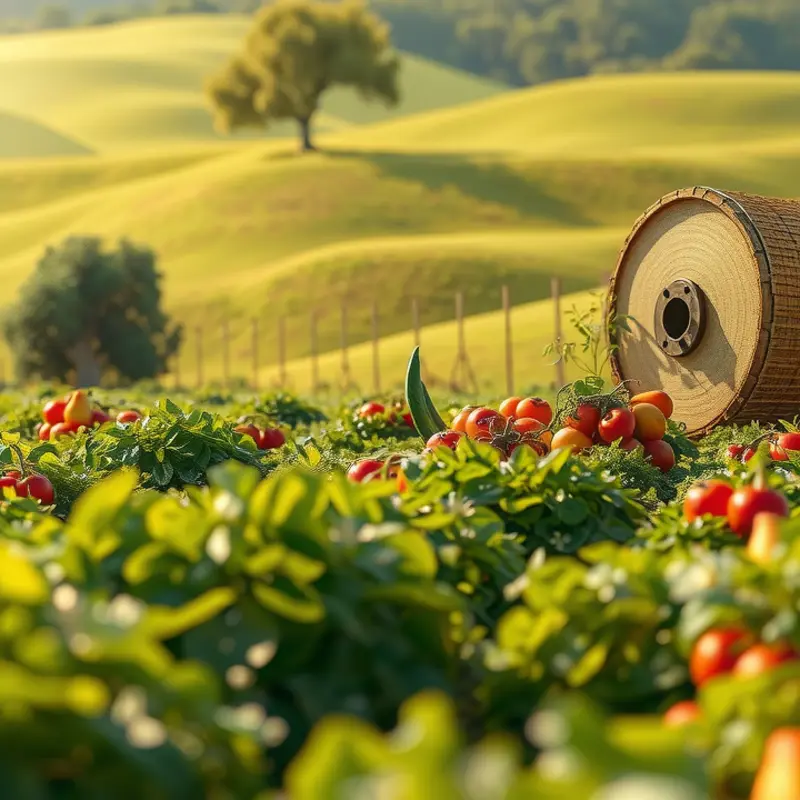Leftovers can be a delicious time-saver, but improper storage can lead to bacterial growth, posing health risks. From improper refrigeration to inadequate reheating, it’s essential to understand how to properly store and manage leftover food. This guide provides practical tips to ensure your meals remain safe and delicious while minimizing waste.
Understanding Bacteria Growth in Leftovers

Bacteria are microscopic organisms that can rapidly multiply under favorable conditions, making them a hidden threat in leftover food. To manage bacterial growth effectively, it is vital to understand three key factors: temperature, time, and pH balance.
Bacteria thrive in what is known as the “danger zone,” ranging from 40°F (4°C) to 140°F (60°C). Within this temperature range, bacterial populations can double every 20 minutes. Therefore, promptly cooling leftovers is critical. Proper refrigeration at 40°F (4°C) or below slows the growth of most bacteria, extending the safety of your food. Ensure refrigerators are set to this temperature, and consider using a thermometer for confirmation.
Time plays an equally significant role. Leaving leftovers at room temperature for over two hours invites bacterial growth. Quick cooling strategies can be employed, such as dividing large portions into smaller, shallow containers. This allows faster heat dissipation. Remember the two-hour rule to minimize the bacterial risk.
The pH level of food determines its susceptibility to bacterial growth. Bacteria prefer neutral to slightly acidic environments. Foods high in acidity, like tomatoes, inherently fight bacterial growth better than low-acidity foods, such as meats or dairy. When preparing or storing foods, consider how pH may impact safety.
Common bacteria, including Salmonella and E. coli, are notorious for contaminating leftovers, often stemming from improper handling or storage. Salmonella, prevalent in poultry, eggs, and dairy, causes significant illness, manifesting in gastrointestinal symptoms. Similarly, E. coli, particularly present in undercooked meats, poses severe health risks, especially to vulnerable populations. Avoid cross-contamination by maintaining clean cooking surfaces and utensils, and ensure all meats reach appropriate internal temperatures.
The importance of swift and correct storage practices cannot be overstated. Rapid cooling and storage in airtight containers significantly diminish the potential for bacterial growth. In addition to refrigeration, freezing leftovers is an excellent option, further preventing bacteria from multiplying and prolonging the shelf life of food.
For more detailed strategies on safe storage practices that minimize waste, consider exploring safer storage of sauces. This can provide additional insights into effective methods that align with reducing food waste and maximizing safety.
Understanding the conditions that foster bacterial growth is the cornerstone of safe food handling. By being diligent about temperature controls, timely storage, and pH considerations, you can protect your meals from unwanted bacterial invasion and ensure your leftovers remain safe for enjoyment.
Safe Storage Practices for Leftovers

Employing safe storage practices is paramount in preventing bacterial growth in leftovers. To start, immediate refrigeration is crucial. Leftovers should be refrigerated within two hours of cooking. This step is essential as it significantly slows down the proliferation of bacteria that thrive at room temperature. By promptly cooling food, you cut down on the time bacteria have to multiply.
Choosing the right storage containers is another critical aspect. Use airtight containers to seal leftovers. These containers protect food by keeping moisture in and airborne contaminants out. They also prevent the crossover of odors and flavors between different foods stored in the fridge. Achieving an airtight seal—whether with containers or high-quality wraps—ensures the food remains as fresh as possible.
To keep track of what’s in your refrigerator, make labeling and dating a habit. This practice helps you manage consumption and reduces waste. Aim to consume leftovers within 3-4 days. This timeframe ensures that you enjoy your meals before bacteria has a chance to make your food unsafe.
Next, regularly monitor your refrigerator’s temperature to maintain it below 40°F (4°C). This cool environment inhibits bacterial growth. Investing in a good refrigerator thermometer can be a wise choice, ensuring the temperature is consistently in a safe range. Consider reading up on eco-smart kitchen storage solutions to maximize energy efficiency while maintaining food safety.
Finally, when it’s time to enjoy those leftovers, ensure proper reheating. Reheat until the food reaches an internal temperature of 165°F (74°C). This step is crucial as it effectively kills any bacteria that might have developed. Using a food thermometer can ensure accuracy, especially with mixed or dense dishes.
Practicing these storage techniques not only keeps leftovers safe but also helps preserve their flavor and nutritional value. Ensuring your kitchen habits align with these safety measures protects your health and contributes to a more sustainable approach to food consumption.
Final words
Preventing bacteria growth in leftovers is essential for both food safety and waste reduction. By understanding the conditions that lead to bacterial proliferation and implementing safe storage practices, you can enjoy your meals longer without compromising health. Whether it’s immediate refrigeration, proper sealing, or careful reheating, each step you take adds a layer of protection against potential risks. Remember, smart food management not only extends the life of your groceries but also promotes a healthier lifestyle.







